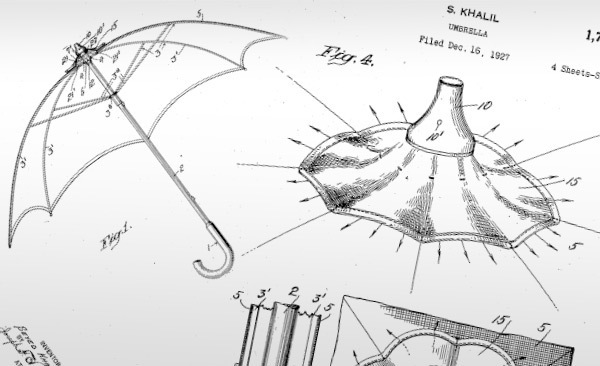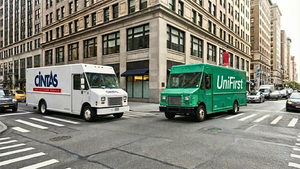A while back, I wrote a short piece on the role patents hold for a small business. There are many solid reasons for seeking and gaining patent protection.
For a small, technical business, two of the larger reasons are to add value and to open lines of communication. But what about small businesses that are developing (or have developed) technology and are engaged in government contracting? It’s a challenging question.

Patents and Skiing
I’m a skier. I’ve skied for most of my life and there are few runs on a mountain that I cannot tackle, albeit some at a slower pace than others. I’m fond of steep, double black diamond runs followed by an easy stroll through a glade. Few crowds and great snow.
What does this have to do with patents? It’s a good analogy. Patents, like skiing, are not for everyone. From an analogy point of view, most companies venturing into gaining patent protection are diving down a green slope and graduating to a strong intermediate blue. Companies may become well-versed in the process as they capture and protect their intellectual property. Hitting and navigating the “bumps” is part of the ride.
But throw a government contract into the mix and we are turning down a run marked “experts only” and “unmarked obstacles.” And like many double black diamond runs, the initial slope is gradual and inviting just before it drops off like a cliff. Why else would one such run be named “Devil’s Crotch”? If only the titles of government contracts were so informative.
The Purpose of Patents
The fundamental purpose of a patent is to provide the inventor, for a limited period, with protection from would-be infringers for their new and useful invention. In exchange for the inventor disclosing the invention and meeting the requirements of patentability, the government grants them the right to exclude others from making, using, selling, manufacturing and importing that which is claimed in the patent.
A patent, as a form of intellectual property, is the mirror image of a trade secret. If no one can figure out how my widget works, why disclose it at all? Thus, some inventions are retained by the creator as a secret, never to be told to anyone.
Patents are created to protect those forms of intellectual property that can be reversed engineered or discovered merely by possessing the product. Assume, for example, you invent the umbrella. Up to the time of your invention, everyone is holding sheets of paper over their heads to keep from getting wet and, well, that only works until the paper is saturated and soggy.
You conceive of and make (we call that “reduce to practice”) a device that provides cover when it is raining and yet folds to a neat cylindrical form, much like a walking stick or cane, when not in use. It’s a hit!
The problem is that as soon as your device is on the market, others can figure out how it works, copy it and make and sell their own version. A patent is the solution.
There is no trade secret here. Let’s leave trade secrets to the Colonel’s 11 herbs and spices.
Now, what if, before you came up with your umbrella, generals were tired of getting wet in the rain and ruining their uniforms. Doing what generals do best, they turned to their staff and told them to solve that problem. Before you know it, there is a request for proposal for a collapsible rain cover device.
You jump at the idea and send in a proposal. The government loves your idea and funds your research. You file for and get a patent and… the government hires someone else to make their umbrellas. What happened?
This is where many stop and look down the steep hill thinking, “Why did I go down this path?” Not to worry! All is not lost.
Patents and Government Contracts
Recall that the government grants an inventor a patent in exchange for disclosing their invention. It does this to foster growth in the arts and sciences. But the government is also granting the contract paying for the development of the technology. And normally, a company paying for the development of technology secures rights and title to that technology under a patent assignment and/or work for hire clause.
So, common sense would tell you that the government, not you, should own your patent and all rights to your invention. In most cases, that assumption would be wrong. While there are “extraordinary circumstances” in which the government does take title to inventions under government contracts, the general rule is that the contractor, not the government, owns the intellectual property, including patents.
What the government does get is a license, and that license is broad. It is a nonexclusive, nontransferable, irrevocable paid-up license to practice, or have practiced on its behalf, the subject invention throughout the world.
This is where it gets interesting.
Data rights are akin to an amalgamated trade secret and copyright. The first thing to recognize here is that data rights are different than patent rights just as a copyright is different from trade secrets. In an instance where the government is paying for a product (deliverable) having data rights (DFARS) or when the deliverable is produced in performance of the contract (FAR), the government gets unlimited rights in that deliverable. That license grants it, and those acting on its behalf, a paid-up, nonexclusive, irrevocable, worldwide license to perform, disclose, reproduce, prepare derivative works, distribute copies to the public, and display the data publicly. (With the exception that copies of software cannot be distributed publicly.) They seem the same, but are not.
Remember the umbrella as compared to the 11 herbs and spices? If a trade secret is disclosed, it is no longer a trade secret. So, if the government discloses the Colonel’s recipe because it has unlimited data rights, the secret is gone. While the government can certainly continue to use the information, so can any competitor in any market, including the commercial market.
Let’s consider the same occurrence from the patent point of view. Recall that the government gets a nonexclusive, nontransferable, irrevocable, paid-up license to practice, or have practiced for and on its behalf, the subject invention throughout the world. With these rights, the government can ask another vendor to make an umbrella for every general so that they can stay dry as they walk in from the parking lot. What it can’t do is transfer that right to a third party.
As a result, the company making the umbrellas for the government (assume that is not your company) cannot turn around and make umbrellas to be sold downtown, online or anywhere that the patent has enforceability. If they did so, you can pull out the patent and introduce them to the enforcement side of article 35 of the U.S. Code.
The Almost-Inevitable Transition From Government to Commercial Markets
The use of patents in the government market is limited. And, to be clear, a “subject invention” under a government contract is broadly defined. That is not to say that the government does not respect patents. They do but a patent owner’s recourse against the government (or a vendor under contract to the government) for patent infringement is limited.
But even if you view patents as being relatively inconsequential in the government marketplace, you must remember they are essential in the commercial market. As the term of a patent is 20 years, it is difficult to conclude that cutting-edge technology developed for the government won’t find its way into the commercial marketplace. Think of the microwave oven, GPS, Siri, Google, infant formula and other “government sponsor” inventions that are now mainstream products.
Who knows... Even your average civilian may one day want to carry one of those umbrella things on rainy day.
About Martensen IP
At the intersection of business, law and technology, Martensen understands the tools of IP. Martensen knows the business of IP. We understand the tech market, especially when the government is a customer, and we know how to plan, assess, and adjust. Patents, trademarks, copyrights, trade secrets, licenses are our tools.
Martensen IP Media Contact
Mike Martensen | Founder
(719) 358-2254
News Via KISS PR https://story.kisspr.com/
Source: Prodigy.press
Release ID: 414448
This content is published on behalf of the above source. Please contact them directly for any concern related to the above.
This press release may contain forward-looking statements. Forward-looking statements describe future expectations, plans, results, or strategies (including product offerings, regulatory plans and business plans) and may change without notice. You are cautioned that such statements are subject to a multitude of risks and uncertainties that could cause future circumstances, events, or results to differ materially from those projected in the forward-looking statements, including the risks that actual results may differ materially from those projected in the forward-looking statements.




